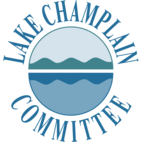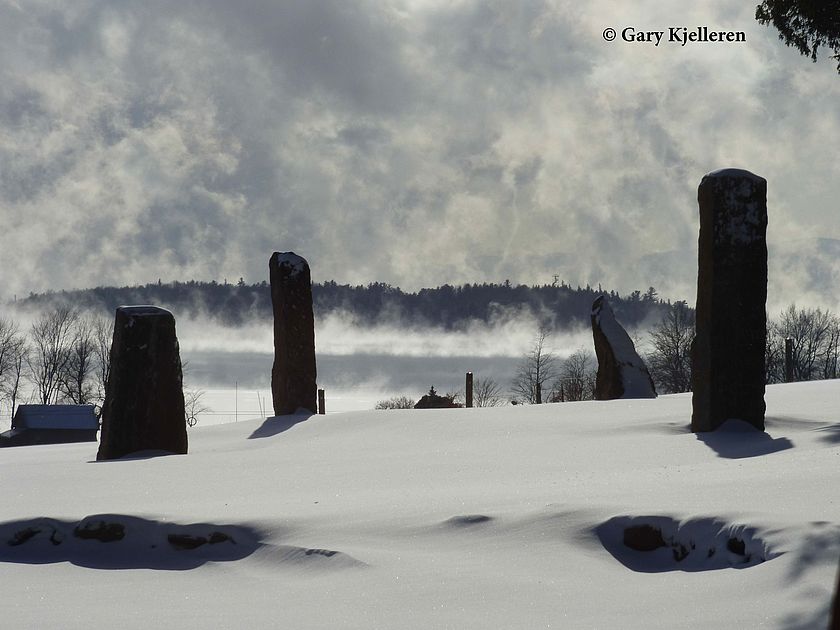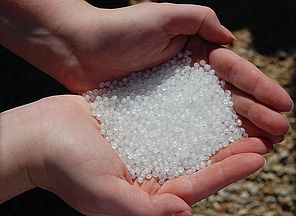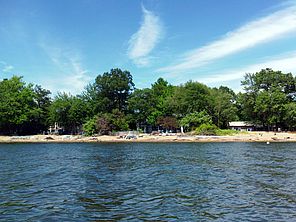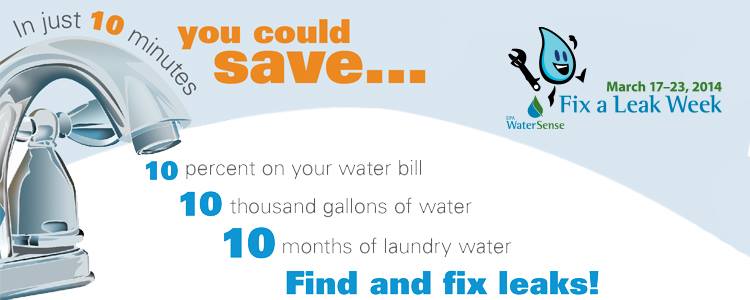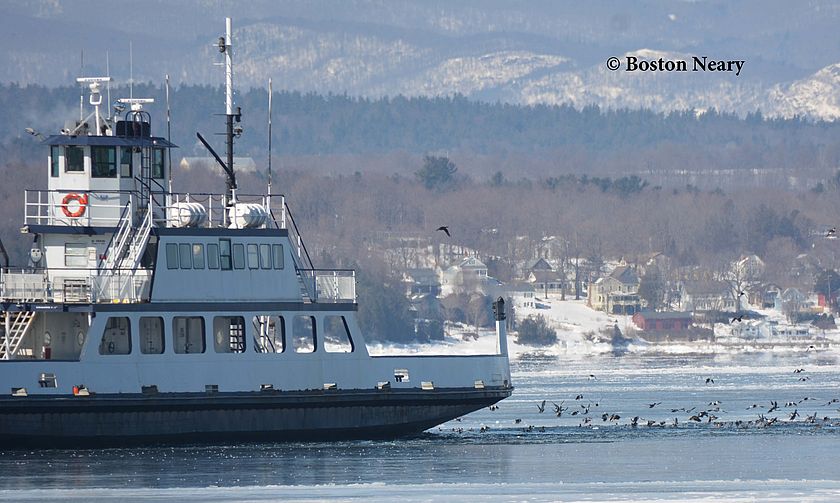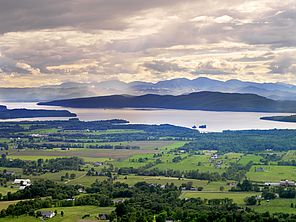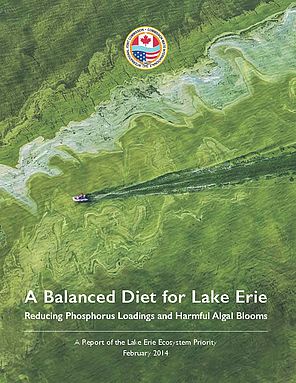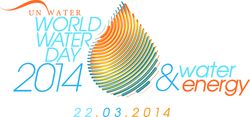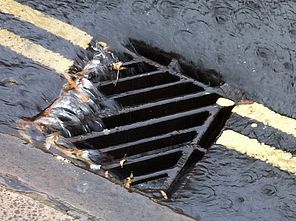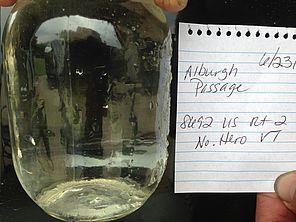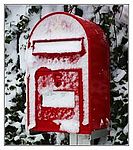A Slide Show of Winter Wonders
Winter in the Lake Champlain watershed brought abundant snow and ice this year. Before we fully embrace spring, we thought we'd share with you some great visuals taken by LCC members and supporters on their explorations on and around the lake. Thank you to Carolyn Bates, Lori Fisher, Cathy Frank, Gary Kjelleren, Phyl Newbeck, Vince Rossano and Jessica Rossi for sharing pictures. Click here to enjoy the show!
EPA pressures VT to go further with lake clean-up plans
The lake clean-up plan known as a TMDL has been the subject of intense debate over the last year. EPA is in the process of developing a pollution budget while Vermont is responsible for outlining an implementation plan for meeting that budget. EPA anticipates the pollution budget will be completed by the end of March. Vermont released a draft implementation plan in late November, but EPA has asked for more detail. EPA called on Vermont to develop a schedule for key actions and program implementations across the Vermont portion of the Basin. The more detailed implementation plan accompanied by a letter of commitment from the Governor is necessary to provide reasonable assurance that pollution reductions will occur. Following Basin-wide plan development, EPA expects the state to develop sub-Basin plans which will be evaluated every five years to assess progress toward lake clean-up.
On February 13, EPA sent a follow-up letter indicating the state would need to find additional measures to ensure clean-up of Missisquoi Bay and the South Lake. So far, models developed by EPA have failed to find a mix of implementation strategies to sufficiently reduce phosphorus loading to meet water quality standards.
In Montpelier, the question remains open as to how the state will provide assurance that it has allocated enough funds to implement all the clean-up projects. A key House committee has passed legislation to find funding for such a plan. The bill would increase the state’s rooms and meals tax by 0.25 percent, increase the liquor and wine sales tax by 0.25 percent, and add a one percent fee on rental vehicles. Together these measures would yield approximately $4 million per year for water protection. The bill still needs to wend through a number of other committees before it could be voted on by the full House. The Governor has previously indicated that any clean-up should be done only with currently available funds.
LCC Urges Leadership on Lake Clean-up
The Lake Champlain Committee, along with the Conservation Law Foundation, Vermont Natural Resources Council and Lake Champlain International, held a press conference at the State House in Montpelier last month asking Governor Shumlin to provide leadership to protect and restore Vermont’s waterways. Speaking after state officials and EPA had briefed legislative committees on the requirements and deadlines of a phosphorus reduction plan (see article above), the organizations called on the Governor to take decisive action on water quality and require that his Agency of Natural Resources develop a comprehensive and effective plan for restoring the health of Lake Champlain.
"Vermont adopted water quality standards for phosphorus pollution in Lake Champlain almost 25 years ago. A generation later those standards have still not been met," stated LCC Executive Director Lori Fisher. "While actions have been taken, they haven't been sufficient to improve conditions. The amount of phosphorus in the lake hasn't changed in many segments and is getting worse in some. The signs are all too evident in Missisquoi Bay, St. Albans Bay and the South Lake." She noted that the State has acknowledged that the biggest reason the lake has been slow to recover is that not enough has been done to reduce loading. Fisher emphasized that "now is the time to "do enough" and deliver on the promise of the Clean Water Act to ensure drinkable water, swimmable beaches, and edible fish." Click here for the text of a joint statement by the groups.
Nurdles to Neuston – Microplastics in our Water
Nurdles – pre-production microplastic resin pellets used in plastic manufacturing. The term is sometimes used more broadly to refer to any small plastic particle including microbeads used in cosmetics as exfoliants and in detergents for cleaning.
Neuston – the collection of minute or microscopic organisms that inhabit the surface layer of a body of water.
Plastics are everywhere. Try shopping for household goods and not coming home with plastic products. It’s almost impossible. Plastic does not degrade easily, yet so many plastic products are designed to be thrown away. Given that, it should come as no surprise that plastics are ending up in waterways.
Perhaps the most famous example of plastic pollution in our waters is The Great Pacific Garbage Patch. This is a region of the North Pacific Ocean with an exceptionally high concentration of plastics and other debris which have been trapped by the North Pacific Gyre. Similar patches exist in the North Atlantic, South Pacific, and the Indian Oceans. Though the patches do contain higher concentrations of litter and debris than other parts of the ocean, they are not necessarily visible, even when you are in them. Most of the debris consists of microplastics - very small particles of floating plastic that are difficult to see. MORE
Shoreland Protection Passes VT Senate
In early February the Vermont Senate passed legislation to protect Vermont shorelands. Over the summer, legislators traveled around the state and held a series of public meetings to hear concerns about the bill. The Senate version incorporates much of the feedback received during those summer sessions. Final passage of the bill will erase Vermont’s stigma as the only New England state without legislation protecting lake shores.
The Senate version of the bill requires a permit for significant clearing of vegetation or expansion of impervious surface along lake shores. Clearings of less than 100 square feet of vegetation at least 25 feet from the shore or construction of less than 500 square feet of impervious surface would not require a permit, but would require registration. The registration is designed to prevent sequential projects that cumulatively would have a significant impact. Routine site maintenance like mowing an existing lawn or clearing dead or dying trees would be exempt from any regulation. To receive a permit the property owner would need to demonstrate that steps have been taken to minimize disturbance. For parcels where existing development puts them out of compliance with the regulation, any new construction has to occur as far from the water as possible and expansion of existing structures can only take place away from the water. If enacted as proposed by the Senate the bill would take effect on July 1. MORE
Fix A Leak Week
LCC, the US Environmental Protection Agency and other WaterSense partners are promoting a week focused on water conservation. Wasting water wastes energy and money and can contribute to lake pollution. More than one trillion gallons of water are lost annually in the U.S. due to easy-to-fix household leaks. If your faucet drips or your toilet runs it can waste over 10,000 gallons a year -- the amount of water in a typical backyard swimming pool. Finding and fixing leaks around the home can be as simple as check, twist and replace.
- Check toilets - put a few drops of food coloring into the tank; wait a few minutes and see if the color appears in the bowl before you flush. If it does, there's a leak.
- Twist on aerators - add new WaterSense labeled faucet aerators and showerheads and tighten pipe and hose connections to save water.
- Replace leaking fixtures - be sure to choose WaterSense labeled fixtures when building or rennovating. They are independently certified to use 20 percent less water and perform as well or better than standard models.
Review your water bills to see how much water you consume, then visit LCC's Water Conservation page or EPA's WaterSense site for additional water saving tips.
Lake Champlain Ices Over
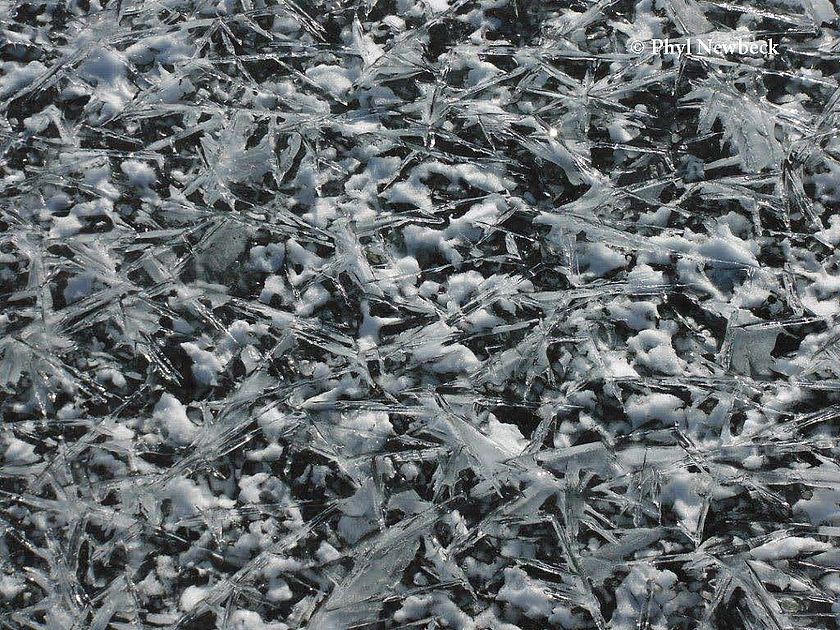
For the first time since 2007 Lake Champlain froze over. According to the records kept by the National Weather Service, ice cover used to be a fairly common event. Starting around the 1950s however, complete ice cover became more unusual.
The ice cover has encouraged many people to get out and explore the lake in a different manner. However, as the days lengthen and sun intensity increases ice will quickly loose its integrity. Old ice is not as strong as new ice. Over time ice can partially thaw and refreeze, but the partial thaws create weak spots, making the ice less reliable.
Most lake ice melting occurs from the bottom. The ice transmits light which warms the underlying water. Snow acts as an insulating layer slowing the melt process. As the ice begins to melt, long thin crystals form. These are even better at transmitting light and melting accelerates. Once the water warms sufficiently, break up can occur rapidly. Click here for photos showcasing the beauty and variety of Lake Champlain ice. Many thanks to Lori Fisher, Cathy Frank, Gary Kjelleren, Phyl Newbeck, Vincent Rossano and Jessica Rossi for sharing their pictures with LCC!
Crowdsourcing Solutions to Climate Change
Climate change trends pose threats to the Lake Champlain watershed and Lake Champlain's water quality. Using the notion that "two heads are better than one," the University of Vermont (UVM) and Vermont EPSCoR's Research on Adaptation to Climate Change (RACC) seek to "crowdsource" solutions to these threats. Participate in an open online survey and express your ideas on climate change adaptation. Responses are anonymous and only ideas are shared with others. Join the several hundred farmers, land developers, policy makers and others already engaging in discussion.
Register to participate at this link and discuss as often or little as you desire. The crowdsource forum will be open through at least April 11. While any ideas you contribute will assist the crowdsource initiative, participants who complete the full registration are also eligible to be entered in a raffle for an iPad. The first 200 individuals to provide comments or solution suggestions will receive a $20 gift certificate to VTStuff.com. To learn more about the crowdsource effort, tune in to LCC Executive Director Lori Fisher's interview with UVM Professor Chris Koliba, a lead researcher with the RACC program.
Nature Note: Winter Waterfowl Congregations
After the lake freeze, the few pockets of open water on Lake Champlain became magnets for the winter ducks, gulls, and eagles that stuck around and braved the frigid temperatures. Hundreds of birds can be found clustered in the ferry lanes dabbling, diving and squawking.
If we spent as much time in the icy water as the ducks we would die of hypothermia, but ducks have a variety of strategies for keeping warm. They fluff their feathers to trap pockets of warm air. They tuck their bills into their bodies reducing the surface area over which heat can be lost. They build up fat reserves during the summer which they burn off during the winter. And they lose very little heat through their legs. Blood vessels in the ducks' legs travel in opposite directions and set up a counter current. Warm blood moving out of the body into the legs encounters cool blood traveling up from the feet. Heat is exchanged from one set of blood vessels to the other throughout the period of their contact. This process conserves most of their body heat rather than losing it to the atmosphere. The system is so efficient that a duck will actually lose more heat from feathered parts of its body than from its exposed feet and legs.
As the days grow longer the intensity of the sun increases so the ice will start melting, attracting even more birds. Many migrating species have already returned: turkey vultures, killdeer, red-winged blackbirds, and surely you’ve noticed the hordes of robins scratching at every piece of bare ground. With most species the males return before the females so they can establish and defend a nesting ground. Once the females return the singing begins as each male tries to convince a female he has found the perfect spot to raise a brood of chicks.
For those interested in avian encounters along the lake, LCC will be hosting bird walks again this year each Friday in May. Walks will begin at Oakledge Park in Burlington at 8:00 AM and last about an hour. Check out LCC's calendar of events for postings about each bird walk.
Miss being on or around the lake?
You can view the lake year-round even when you're not lakeside with LCC's color note cards. An eight-card set includes two cards each of four different beautiful lake scenes. At $10 for members, $14 if you haven't joined yet, they're a great deal. (Shipping and handling is extra.) Give them as gifts to fellow lake lovers, buy several sets to stay in touch with people you care about and know that your purchase supports LCC's work for a healthy, accessible lake. The cards are printed on high quality, 100% recycled card stock and come with matching envelopes. View all four scenes on our website and purchase them online, download our mail-in-order form, or call us at 802 658-1414 and we'll process your order. Thanks to photographers Carolyn Bates, Trip Kinney, Lisa Liotta, and Philip Mongeau for generously sharing their lake pictures with LCC!
News from Other Lakes
Lake Erie Phosphorus Mitigation Called For
Lake Champlain isn’t the only waterbody facing excessive phosphorus loading. In February, the International Joint Commission (IJC) released a report offering scientific and policy advice to governments as they implement plans to respond to deteriorating Lake Erie water quality. In 2011, Lake Erie experienced its largest algal bloom in history. In 2012, the IJC established the Lake Erie Ecosystem Priority (LEEP) in response to a growing challenge: lake-wide changes in Lake Erie related to problems of phosphorus enrichment from both rural and urban sources, compounded by the influence of climate change and aquatic invasive species. These changes have resulted in impaired water quality, with impacts on ecosystem health, drinking water supplies, fisheries, recreation and tourism, and property values. The report offers a series of steps to address phosphorus pollution, many of which will be familiar to long-time followers of water quality protection measures in the Champlain Basin. Click here to view the report.
Based on the research of dozens of scientists from both sides of the border, the IJC found that water quality has declined over the past decade, with impacts on ecosystem health, drinking water supplies, fisheries, recreation, tourism and property values. More than 400 people attended public meetings after a draft report was released in August 2013. MORE
Upcoming Events Around the Region
March 22, 2014 - World Water Day
Did you know letting a faucet run for five minutes uses about as much energy as letting a 60-watt light bulb run for 14 hours? World Water Day 2014 is focused on educating on the direct link between water consumption and energy use, and promoting sustainable practices on the use of both valuable resources. Read more here about what individuals and groups are doing around the world to celebrate World Water Day.
March 25, 2014 - LCBP Climate Change Conference
The Lake Champlain Basin Program will host two climate change-focused workshops March 25-26, 2014 at the Hilton Hotel at 60 Battery Street in Burlington. Registration is free, but the workshop will be limited to 50 participants. Please contact Stephanie Castle, (scastle@lcbp.org) if you would like to participate. A buffet lunch and refreshments will be provided at no cost.
LCC Staff Scientist Mike Winslow will be participating in a panel discussion on Tuesday, March 25 at 10:30 a.m. entitled Findings, Issues and Recommendations from Green Infrastructure. The other panelists will be Stephanie Hurley (UVM) and Julie Moore (Stone Environmental). MORE
March 27, 2014 - LCC presentation at 38th Annual Meeting of the New England Association of Environmental Biologists
The New England Association of Environmental Biologists is hosting a two-day conference from March 26-28, 2014 at the Hilton Hotel at 60 Battery Street in Burlington. LCC Staff Scientist Mike Winslow will be giving a Slam presentation entitled “Volunteer Monitoring of Cyanobacteria on Lake Champlain” at the conference on Thursday March 27. The Slam Session takes place from 1:00 - 3:00 PM and is a series of five-minute presentations followed by breakout discussions with the speakers. Registration for the conference is $70/person.
April 2014 - Earth Month for Water
LCC is partnering with area salons to promote water protection and conservation. Check LCC's Calendar of Events and Facebook pages for information on Spa Nights, cut-a-thons and other events to raise awareness and money for water.
April 5, 2014 - April Stool's Day
Dog doo is gross! What's worse is that pet poop left behind on trails and in our parks enters streams and Lake Champlain from which 200,000 people get their drinking water. Take action and join in April Stools' Day on Saturday, April 5, 2014 to clean up our parks and protect our waterways.
Hosted by LCC and the Vermont Forests, Parks and Recreation, three clean-ups are scheduled for Saturday, April 5 from 10:00 AM - Noon at Grand Isle State Park, Niquette Bay State Park and Sandbar State Park. Gloves and bags will be provided and hand sanitizer available. We'll be picking up pet poo and any litter we find along the way. RSVP's are encouraged to ensure we have enough supplies. If you're unable to attend a park clean up, head out to your favorite park, trail or neighborhood.
Contact Lisa Liotta (802) 893-5210 to RSVP to the Niquette Bay or Sandbar State Park clean ups. Contact Ashley Brisson (802) 372-4300 to RSVP to the Grand Isle State Park clean up.
April 10, 2014 - Cat Walk for Water to Benefit LCC
Join in a fun night of music, fashion and hair with flair in support of a good cause at AVEDA's Catwalk for Water on Thursday, April 10, 2014 at Club Venue in South Burlington! Doors open at 7:30 PM and the cat walk starts at 8:00 PM. Tickets cost $10 and are available in advance at O'briens Aveda Institute as well as at Club Venue. Proceeds from the event will support LCC's water protection and restoration programs. Drink specials, an after party and photo booth follow AVEDA's catwalk.
Moving? Changing Email Addresses?
If you’ve changed your address recently, please send us an email so we can update your files and ensure you receive news on lake issues and LCC’s work. Email is our primary form of communication with members. Mailing electronically saves time and resources and reinforces the stewardship ethic of our mission. We don’t give away or sell email addresses.
To ensure you receive email from LCC, please add lcc@lakechamplaincommittee.org and the domain enews.lakechamplaincommittee.org to your safe/allowed list and address book. Thanks!
Lake Champlain Committee Board of Directors
Gary Kjelleren - Chair (South Hero, VT), Sharon Murray - Treasurer (Bolton, VT), Alan Booth (Plattsburgh, NY), Sandy Montgomery (Montreal, QC), Ann Ruzow Holland (Willsboro, NY), Hank Slauson (Shelburne, VT), Mary Van Vleck (Charlotte, VT), Chuck Woessner (Grand Isle, VT).
Lake Champlain Advisory Council
Megan Epler Wood (Burlington, VT), Steven Kellogg (Essex, NY), Peter S. Paine, Jr. (Willsboro, NY), Mary Watzin (NC).
Lake Champlain Committee Staff
Lori Fisher, Executive Director
Jessica Rossi, Office Manager
Mike Winslow, Staff Scientist
